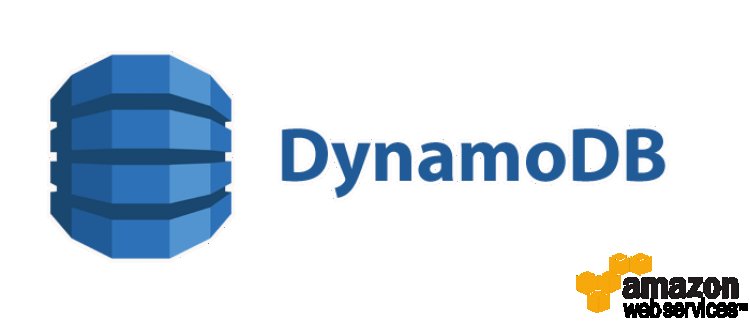DynamoDB - Delete Items

DynamoDB - Delete Items
In today's digital landscape, where data is the backbone of every application, efficient management of databases is crucial. Amazon DynamoDB, a fully managed NoSQL database service, is a popular choice among developers for its scalability and high performance. One essential operation in DynamoDB is deleting items. In this article, we will delve into the intricacies of deleting items from DynamoDB, providing you with a comprehensive guide.
Table of Contents
- Introduction to DynamoDB
- Why Deleting Items is Important
- Prerequisites
- Using the AWS Management Console
- Step 1: Log into AWS Console
- Step 2: Access DynamoDB
- Step 3: Select Your Table
- Step 4: Delete an Item
- Deleting Items Programmatically
- Step 1: Set Up AWS SDK
- Step 2: Write Code for Deletion
- Step 3: Test Your Code
- Conditional Deletes
- Step 1: Define a Condition
- Step 2: Deleting with Conditions
- Best Practices
- Tip 1: Utilize Batch Operations
- Tip 2: Monitor Your Deletes
- Common Pitfalls to Avoid
- Conclusion
- FAQs
- What is DynamoDB?
- Can I recover deleted items in DynamoDB?
- Is there a limit to the number of items I can delete at once?
- How can I prevent accidental deletions in DynamoDB?
- Does deleting items affect DynamoDB's performance?
1. Introduction to DynamoDB
Amazon DynamoDB is a fully managed NoSQL database service provided by Amazon Web Services (AWS). It is designed to provide fast and predictable performance with seamless scalability. DynamoDB is an excellent choice for applications that require low-latency access to data, such as e-commerce platforms, gaming apps, and IoT applications.
2. Why Deleting Items is Important
In any database system, including DynamoDB, data management is a critical aspect of application development. Deleting items is essential to maintain data accuracy and to ensure that your database only contains relevant and up-to-date information. Whether you need to remove outdated records or user-generated content, DynamoDB offers multiple ways to perform item deletions.
3. Prerequisites
Before we dive into the various methods of deleting items in DynamoDB, you'll need the following:
- An AWS account with access to DynamoDB.
- A DynamoDB table set up and populated with data.
4. Using the AWS Management Console
Step 1: Log into AWS Console
To begin, log in to your AWS Management Console using your credentials.
Step 2: Access DynamoDB
Navigate to the DynamoDB service from the AWS Console dashboard.
Step 3: Select Your Table
From the DynamoDB dashboard, select the table from which you want to delete items.
Step 4: Delete an Item
Choose the item you wish to delete, and click on the "Delete" button. Confirm the deletion when prompted.
5. Deleting Items Programmatically
Deleting items programmatically allows you to automate the process, making it suitable for batch operations or scenarios where items need to be removed based on specific conditions.
Step 1: Set Up AWS SDK
Install and configure the AWS SDK for your preferred programming language.
Step 2: Write Code for Deletion
Write code to connect to your DynamoDB table and delete items based on your application's logic.
Step 3: Test Your Code
Thoroughly test your code to ensure it deletes items accurately and efficiently.
6. Conditional Deletes
Conditional deletes in DynamoDB let you specify conditions that must be met for an item to be deleted. This can help prevent accidental deletions and add an extra layer of control.
Step 1: Define a Condition
Specify the conditions that an item must meet for deletion to occur.
Step 2: Deleting with Conditions
Execute your delete operation with the defined conditions in place.
7. Best Practices
When dealing with item deletions in DynamoDB, consider the following best practices:
Tip 1: Utilize Batch Operations
Batch operations can significantly improve deletion performance when dealing with a large number of items.
Tip 2: Monitor Your Deletes
Regularly monitor your item deletion operations to ensure they are running efficiently and as expected.
8. Common Pitfalls to Avoid
While deleting items in DynamoDB, watch out for common pitfalls such as unintended data loss and inefficient deletion processes. Be sure to follow best practices to mitigate these issues.
9. Conclusion
In this comprehensive guide, we've explored various methods of deleting items from DynamoDB, from using the AWS Management Console to performing deletions programmatically with conditions. Efficient item deletion is crucial for maintaining data integrity and optimizing your DynamoDB usage.
10. FAQs
1. What is DynamoDB?
Amazon DynamoDB is a fully managed NoSQL database service provided by AWS. It offers fast and predictable performance with seamless scalability.
2. Can I recover deleted items in DynamoDB?
No, DynamoDB does not provide a built-in feature for recovering deleted items. It's essential to have data backup strategies in place.
3. Is there a limit to the number of items I can delete at once?
DynamoDB imposes limits on batch operations, so be sure to check the documentation for the most up-to-date information on batch delete limits.
4. How can I prevent accidental deletions in DynamoDB?
You can use conditional deletes and carefully manage access permissions to prevent accidental deletions.
5. Does deleting items affect DynamoDB's performance?
Deleting items in DynamoDB can impact its performance, especially if not done efficiently. Following best practices and monitoring deletions is crucial to maintain performance.
In conclusion, mastering the art of deleting items in DynamoDB is essential for any developer or database administrator working with this powerful NoSQL database. Whether you prefer the ease of the AWS Management Console or the flexibility of programmatically deleting items, DynamoDB offers you the tools to efficiently manage your data and keep your applications running smoothly.

 user-pcr
user-pcr 













